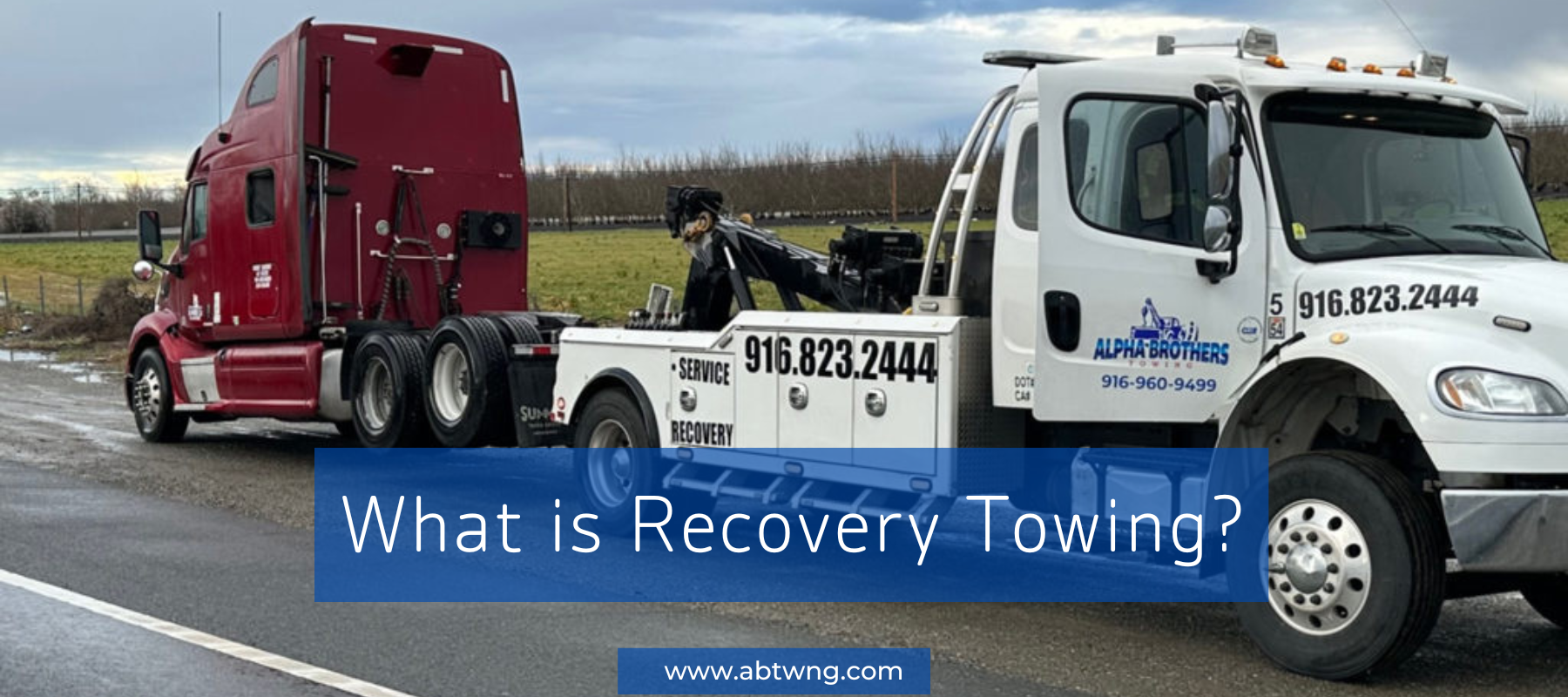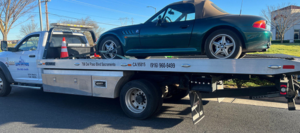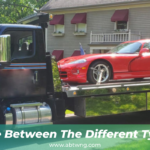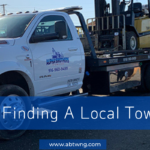
If you’re a driver, chances are you’ve experienced a breakdown or accident that has left you stranded on the side of the road. In such situations, recovery towing is a service that can help you get your vehicle to a safe location. Recovery towing is a specialized type of towing that involves moving vehicles that are either stuck, broken down, or involved in an accident. It’s different from regular towing because it requires special equipment and techniques to safely move a disabled vehicle. In this blog, we’ll explore the ins and outs of towing, including what it is, how it works, and when you might need it. So if you’re curious about recovery towing or just want to be prepared for any roadside emergency, keep reading!
Recovery Towing

Recovery towing refers to the process of moving a vehicle that is unable to operate on its own due to mechanical or electrical problems, accidents, or other reasons. Recovery towing is typically used when a vehicle is stuck or unable to move on its own, and the driver needs assistance in getting the vehicle to a repair shop or other location.
Recovery towing services are typically offered by towing companies that specialize in vehicle recovery. These companies have specialized equipment and vehicles that are designed to handle the towing of disabled vehicles, including flatbed trucks, tow dollies, and wreckers.
The recovery towing process typically begins with the driver contacting a towing company and providing information about the location and condition of the disabled vehicle. The towing company will then dispatch a tow truck and crew to the location to assess the situation and determine the best method for towing the vehicle.
Recovery towing can be a complex process that requires careful planning and execution to ensure the safety of the vehicle and its occupants. It is important to choose a reputable and experienced towing company to handle the recovery towing process to ensure the best possible outcome.
Who Provides Recovery Towing Services?
When it comes to road accidents or breakdowns, recovery towing services are essential to help clear the area and provide assistance to drivers in need. But who provides these services?
Typically, recovery towing services are offered by specialized companies that have the equipment and expertise necessary to safely and efficiently tow vehicles of all sizes. These companies may be independent or part of larger towing companies that offer a range of services, including roadside assistance, vehicle transport, and more.
Recovery towing companies often have a fleet of tow trucks equipped with specialized equipment, such as winches, cranes, and flatbeds, to handle different types of recovery situations. They also have trained professionals who know how to properly secure and transport vehicles, ensuring the safety of both the driver and their vehicle.
Types of Vehicles Used for Recovery Towing
When a vehicle breaks down or gets stuck on the road, it needs to be towed to a safe location for repair or maintenance. This process of towing a disabled vehicle is called recovery towing. Recovery towing requires specialized equipment and vehicles that can safely move a disabled vehicle from one place to another. In this article, we will discuss the different types of vehicles used for recovery towing.
Tow Trucks
Tow trucks are the most common type of vehicle used for recovery towing. They come in different sizes and shapes, from small flatbed trucks to large heavy-duty wreckers. Tow trucks are equipped with a winch system that allows them to pull a disabled vehicle onto the flatbed or lift it up by the wheels. Tow trucks are typically used to tow passenger cars, vans, and light-duty trucks.
According to a report by IBISWorld, the towing industry in the US is worth $8 billion, and tow trucks account for 78% of the industry revenue.
Heavy-Duty Towing Trucks
Heavy-duty towing trucks are used for towing larger vehicles such as buses, RVs, and tractor-trailers. These vehicles have a higher weight capacity and are equipped with specialized towing equipment, such as a boom or a rotator, that allows them to safely lift and tow heavier vehicles.
Flatbed Trucks
Flatbed trucks are also commonly used for recovery towing. Unlike tow trucks, flatbed trucks have a flat platform on the back where the disabled vehicle can be placed. Flatbed trucks are ideal for towing vehicles that cannot be driven, such as those that have been in an accident or are completely immobile.
According to a report by Allied Market Research, the global towing and recovery market size was valued at $85.44 billion in 2020 and is projected to reach $129.67 billion by 2028, growing at a CAGR of 5.1% from 2021 to 2028.
Safety Considerations during Recovery Towing
Recovery towing is a method of towing a vehicle that has broken down or been involved in an accident and cannot be driven to a repair shop or destination. This type of towing requires special equipment and expertise, as well as a focus on safety considerations to avoid further damage or injury.
One of the most critical safety considerations during recovery towing is the use of appropriate equipment. Depending on the situation, a flatbed tow truck, wheel-lift tow truck, or boom tow truck may be necessary. It’s essential to choose the right tow truck for the job to avoid additional damage to the vehicle or injury to those involved.
In addition to equipment, safety measures such as traffic control and proper signaling are crucial during recovery towing. The area around the vehicle being towed should be blocked off with cones or flares to ensure the safety of both the tow truck operator and other motorists. Proper signaling, including the use of hazard lights, brake lights, and turn signals, is also essential to communicate the tow truck’s movements and avoid accidents.
Furthermore, the recovery towing process requires a skilled operator who understands the mechanics of the damaged vehicle and the appropriate methods for towing it safely. The operator must be knowledgeable about weight distribution, towing speed, and the use of straps and chains to secure the vehicle during transport.
How to Choose the Right Recovery Towing Company
If you find yourself in a situation where you need recovery towing services, it’s important to choose the right company. Not all recovery towing companies are created equal, and selecting the wrong one could result in damage to your vehicle or longer wait times than necessary.
To ensure that you choose the right recovery towing company, there are a few factors to consider. Firstly, you want to look for a company that offers 24/7 service. Emergencies can happen at any time, so you need to be able to rely on a company that can respond to your needs no matter when they occur.
Secondly, make sure the recovery towing company has the necessary equipment to handle your vehicle. This includes not only the right type of tow truck but also any additional tools that may be needed, such as winches or cranes. If you have a large or heavy vehicle, you’ll want to ensure that the company has experience and expertise in towing similar vehicles.
Another important factor to consider is the company’s reputation. Check online reviews and ask for recommendations from friends or family members who have used recovery towing services in the past. A good company will have a solid track record of providing timely and reliable service.
Lastly, don’t forget to ask about pricing. While you don’t want to choose a company solely based on price, it’s important to ensure that you’re not overpaying for the services you receive. Make sure that the company provides a clear breakdown of their fees and any additional charges that may apply.




